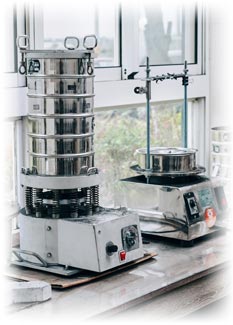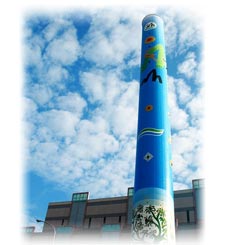| |
 |
 |
Activated carbon for air purification is made from a selection of high quality wood or coconut shells, which underwent in-depth activation and our unique aperture adjustment technology. The activated carbon has a wealth of pores, and the size of the pores is slightly larger than toxic gases, the specific surface area of which is > 1300 square flat / g. It has efficient adsorption capacity for toxic and harmful gases such as benzene, formalin, ammonia, etc., and can effectively remove gaseous pollutants and hazardous malodorous substances from the air indoor, thus achieving the purposes of pollution reduction and air purification. Now we have introduced two specifications of products according to different applications, which are spherical and cylindrical, so that desorption regeneration is easier, loss is lower, and compared to conventional granular or powdered activated carbon the service life is higher, which can greatly reduce user cost. Therefore, be it from the perspective of performance or the consumer, activated carbon is the optimal air purification filter. |
| |
 |
 |
Drinking water quality is directly related to human health; drainage and wastewater treatment have a significant impact on the water environment on Earth. More than 50% of the usage of activated carbon is water-related in developed countries; the degree of attention paid to water quality is also increasing in our country.
(1) Tap water treatment:
The purpose of using activated carbon for water treatment is to improve water quality and remove substances harmful to the human body, such as unpleasant odor or taste, humus, oils, pesticides, detergents, etc.
(2) Production water treatment:
Activated carbon is widely used in a variety of production water treatment. For instance, to remove groundwater color, odor, colloidal substances, detergents, pesticides and other organic substances in the brewing industry, the soft drinks industry and the ice industry, or the removal of free chlorine and odor in tap water, etc. Activated carbon used in the de-oiling of boiler water and boiler return water in industrial sectors such as electricity and chemical sectors; activated carbon for pharmaceutical industry to remove water pyrogen. The electronics industry uses activated carbon to prepare ultra-pure water; maritime industry uses activated carbon to produce drinking water; aquarium uses activated carbon to remove chlorine in tap water and so on.
|
| |
 |
 |
Activated carbon for industrial water purification treatment
Activated carbon is also used to protect the ion exchange resin, purify loop water of factory and so on.
(1) Treatment of production wastewater:
The discharged wastewater from various production processes contains different impurities, which are relatively simple and easier to be processed. Therefore, they should be treated before being discharged or used in cycle.
(2) Sewage (effluent) treatment:
Sewage is the effluent converged from a variety of wastewater, and the composition of which is extremely complex. During the treatment, coagulation precipitation method (physical method), activated carbon sludge method (biological), and activated carbon adsorption method are usually used in conjunction one another to improve the treatment effect and to lower treatment costs. Activated carbon treatment is usually used in concert with biological methods, or used subsequently as the ultimate treatment. After the treatment, colors, pesticides, detergents, odors, and impurities including BOD, COD, and TOC can be removed from the water, which can then be reused or discharged as industrial and agricultural water. To conduct adsorption capacity evaluation tests on the applications of activated carbon, it is best to use activated carbon that has been actually used, operating conditions, and specific processed material.
|
| |
|
|

